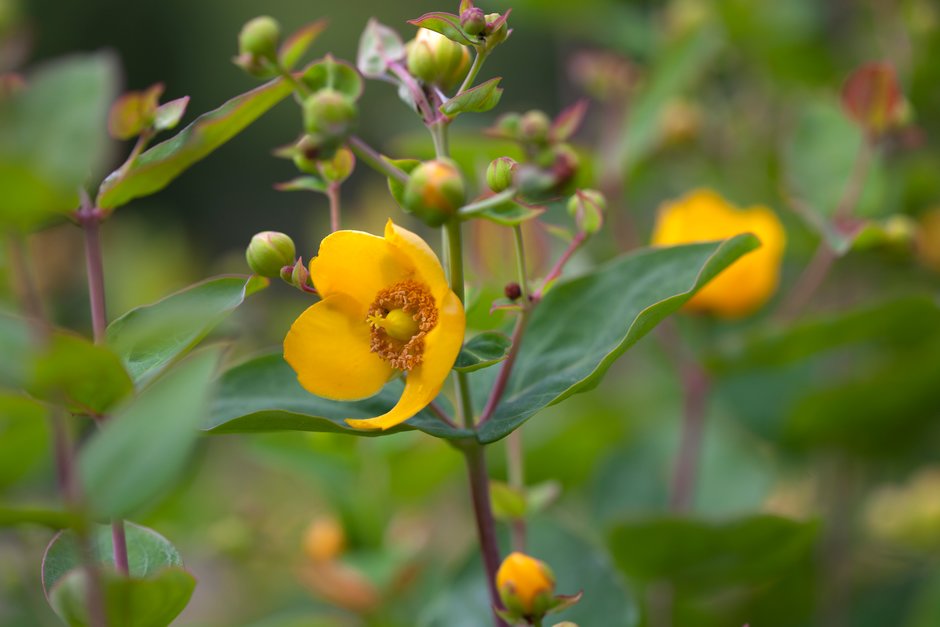Hypericum bellum
A semi-evergreen, densely-branched shrub with arching stems to 1m tall. Leaves arebroadly ovate to almost circular with wavy edges; golden-yellow, cup-shaped flowers to 3.5cm in diameter are borne at stem tips above the foliage from early summer into autumn
Size
Ultimate height
0.5–1 metresTime to ultimate height
5–10 yearsUltimate spread
1–1.5 metresGrowing conditions
Moisture
Moist but well–drainedpH
Acid, Alkaline, NeutralColour & scent
| Stem | Flower | Foliage | Fruit | |
| Spring | Green | |||
|---|---|---|---|---|
| Summer | Yellow Gold | |||
| Autumn | Yellow Gold | Green | ||
| Winter | Green |
Position
- Full sun
- Partial shade
Aspect
South–facing or North–facing or East–facing or West–facing
Exposure
Exposed or Sheltered Hardiness
H5Botanical details
- Family
- Hypericaceae
- Native to GB / Ireland
- No
- Foliage
- Semi evergreen
- Habit
- Bushy
- Potentially harmful
- Fruit are ornamental - not to be eaten. Wear gloves and other protective equipment when handling Pets: Fruit are ornamental - not to be eaten - see the HTA guide to potentially harmful plants for further information and useful contact numbers
- Genus
Hypericum can be annuals, perennials, shrubs or trees, evergreen or deciduous, with usually paired leaves and showy yellow flowers with prominent stamens, followed by capsules, occasionally berry-like
- Name status
Correct
- Plant range
- Himalaya, W China
How to grow
Cultivation
Grow in moist but well-drained soil in sun or partial shade
Propagation
Propagate by seed in autumn or by softwood cuttings or semi-ripe cuttings in summer
Suggested planting locations and garden types
- Cottage and informal garden
- City and courtyard gardens
- Low Maintenance
- Banks and slopes
- Flower borders and beds
Pruning
Pests
Generally pest-free
Diseases
May be susceptible to a rust and honey fungus (rarely)
Love gardening
Sign up to receive regular gardening tips, inspiration, offers and more
View our Privacy Policy
Get involved
The Royal Horticultural Society is the UK’s leading gardening charity. We aim to enrich everyone’s life through plants, and make the UK a greener and more beautiful place.

